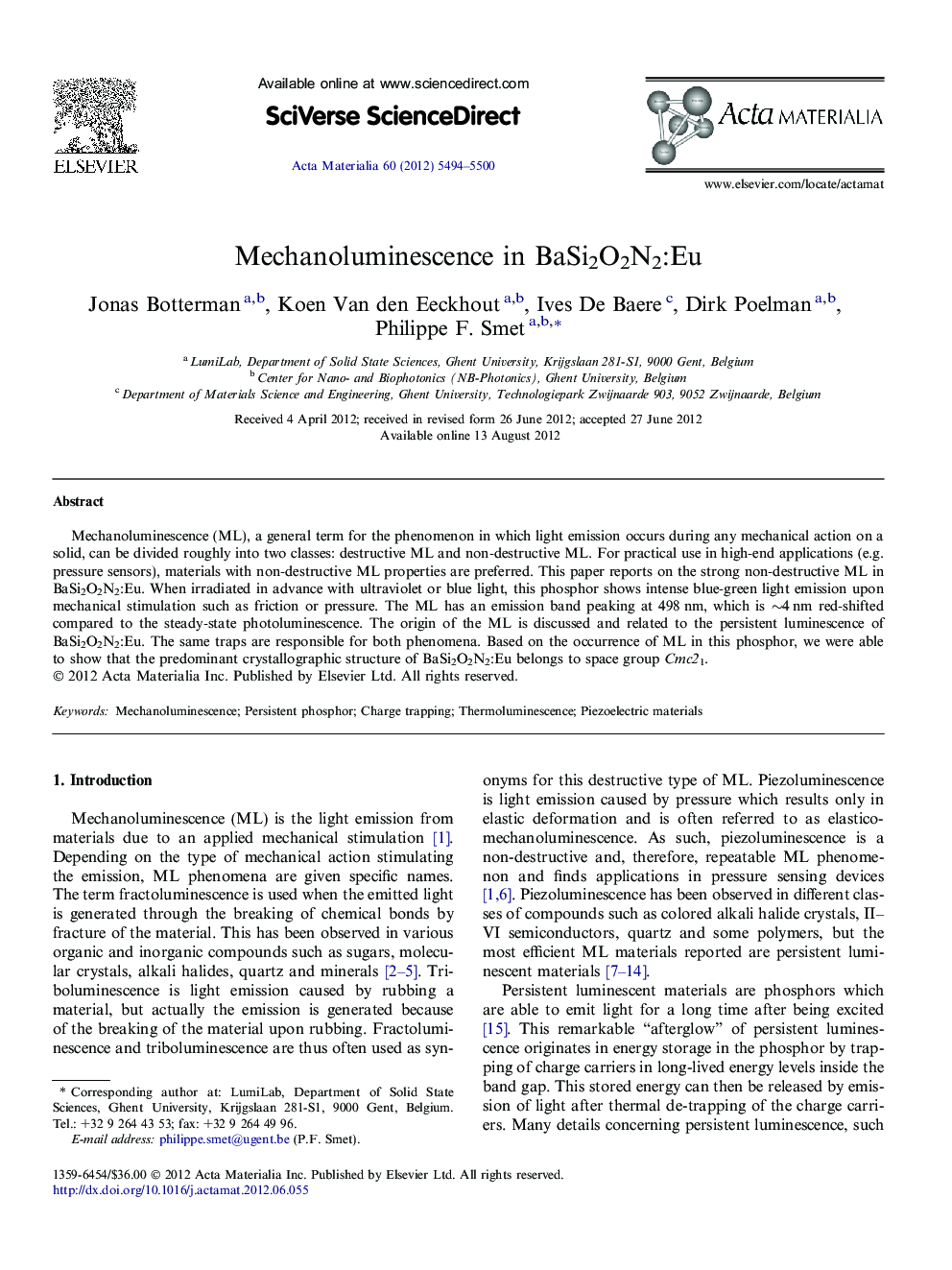| Article ID | Journal | Published Year | Pages | File Type |
|---|---|---|---|---|
| 10620393 | Acta Materialia | 2012 | 7 Pages |
Abstract
Mechanoluminescence (ML), a general term for the phenomenon in which light emission occurs during any mechanical action on a solid, can be divided roughly into two classes: destructive ML and non-destructive ML. For practical use in high-end applications (e.g. pressure sensors), materials with non-destructive ML properties are preferred. This paper reports on the strong non-destructive ML in BaSi2O2N2:Eu. When irradiated in advance with ultraviolet or blue light, this phosphor shows intense blue-green light emission upon mechanical stimulation such as friction or pressure. The ML has an emission band peaking at 498Â nm, which is â¼4Â nm red-shifted compared to the steady-state photoluminescence. The origin of the ML is discussed and related to the persistent luminescence of BaSi2O2N2:Eu. The same traps are responsible for both phenomena. Based on the occurrence of ML in this phosphor, we were able to show that the predominant crystallographic structure of BaSi2O2N2:Eu belongs to space group Cmc21.
Keywords
Related Topics
Physical Sciences and Engineering
Materials Science
Ceramics and Composites
Authors
Jonas Botterman, Koen Van den Eeckhout, Ives De Baere, Dirk Poelman, Philippe F. Smet,
